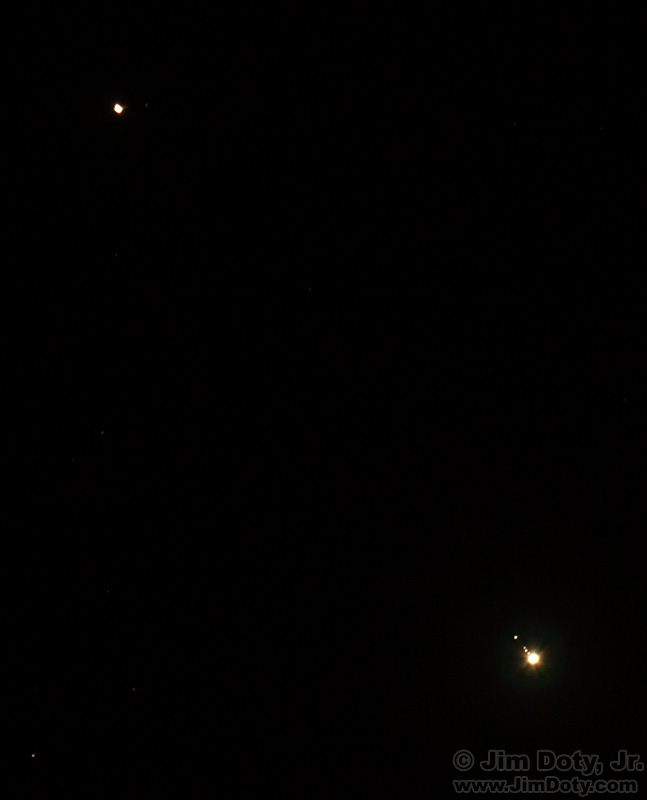
December 21, is the “Great Conjunction” of Jupiter and Saturn. This is the closest they have been in 397 years. Start looking now. Go out and look in the southwest sky at dusk. Jupiter and Saturn will be the brightest objects you will see other than the moon.
Finding Jupiter and Saturn
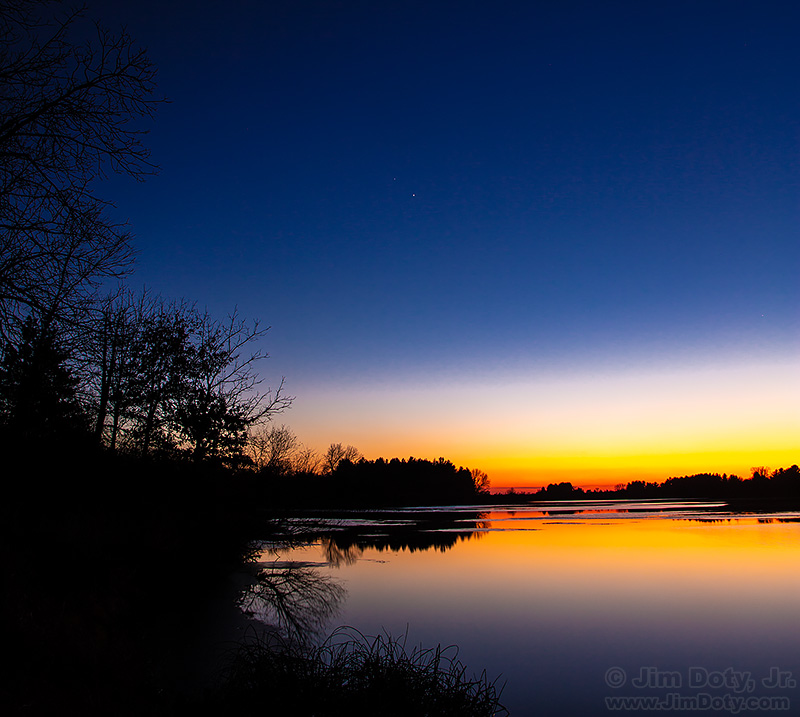
Jupiter and Saturn will appear in the sky in the southwest at dusk. At first they will be quite faint. In the photo above they are in the middle of the frame, left to right, and about 1/4 of the way down from the top of the frame As they sky gets darker they will be much more obvious (photo below).
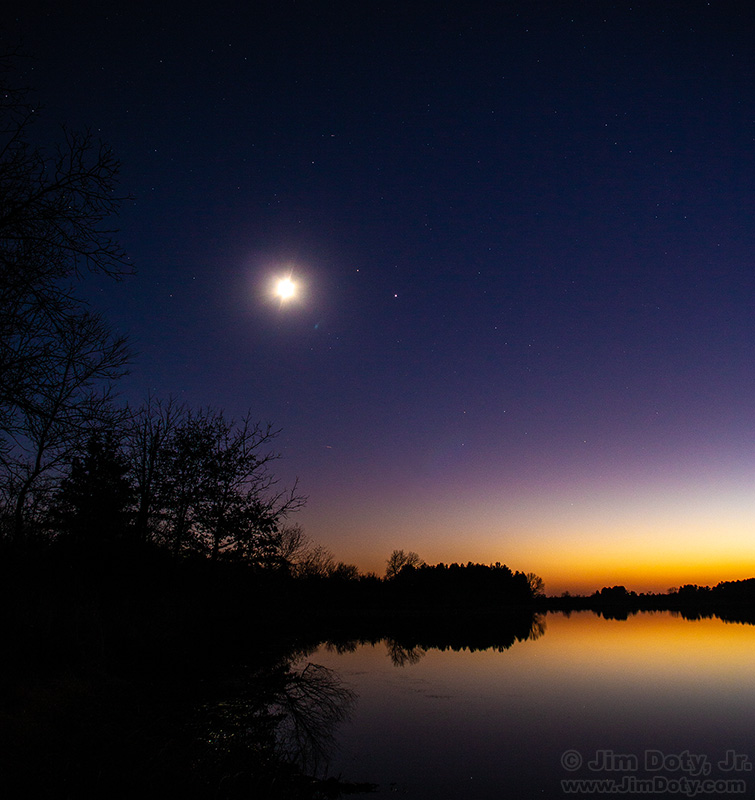
If you want a computer simulated preview of the sky, download Stellarium (it is free, link below) and install it on your computer. Pick the nearest town to you in the software’s database and use that is your default location. Or can add your own GPS coordinates as your default location. You can set the date and time to any date and time of your choosing. Start with 6 pm this evening and run the clock forward, day by day, to watch the planets get closer to each other.
Visual Observing
Jupiter passes Saturn only once every 20 years in the night sky, so this won’t happen again until 2040. But this time is extra special. They will only be 6.1 arc minutes apart. That is 0.102 degrees. The last time they were this close was 1623, just 14 years after Galileo made his first telescope.
How close is 6.1 arc minutes? There is a double star in the middle of the handle of the Big Dipper. Mizar (2nd magnitude) and Alcor (4th magnitude) are a naked eye double star that are 11.8 arc minutes apart, roughly twice as far apart as Jupiter and Saturn will be tonight. Mizar and Alcor have long been a test of visual acuity. Some people can see them as two stars, and some people as one. And as our eyes age, its gets harder to see them as two stars. Which means you may or may not be able to see Jupiter and Saturn as two separate objects. Take binoculars out with you. Binoculars will easily separate Jupiter and Saturn.
If you know how to use a telescope, you know what to do. If you aren’t a telescope user already, don’t go out and buy a cheap telescope at a big box store. First, the quality will be poor, and second, it will be an exercise in frustration. You will be much happier using binoculars. They are a much better choice for the first time observer. If you really want to buy a telescope, read this article first.
Photography
To take pictures, first, you need to know how to focus focus your lens at infinity and do it at night. Autofocus will not work, and manual focus at night is tricky at best. Plus zoom lenses focus past infinity so it is not just a matter of turning the focus ring until it stops. For suggestions, read the first two articles in the links section.
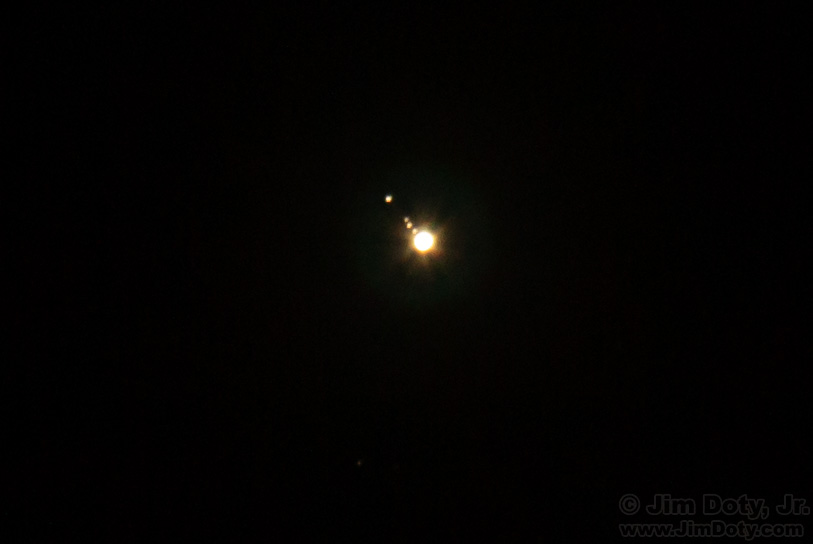
A 300mm or longer lens can capture Jupiter, it’s 4 Galilean moons, and Saturn. Focus carefully in manual mode. With a long lens try ISO 3200, f/5.6, and a range of shutter speeds between 1/60 and 1/8 second. The image immediately above, cropped from the image at the top of this article, will give you an idea what is possible at around 300mm.
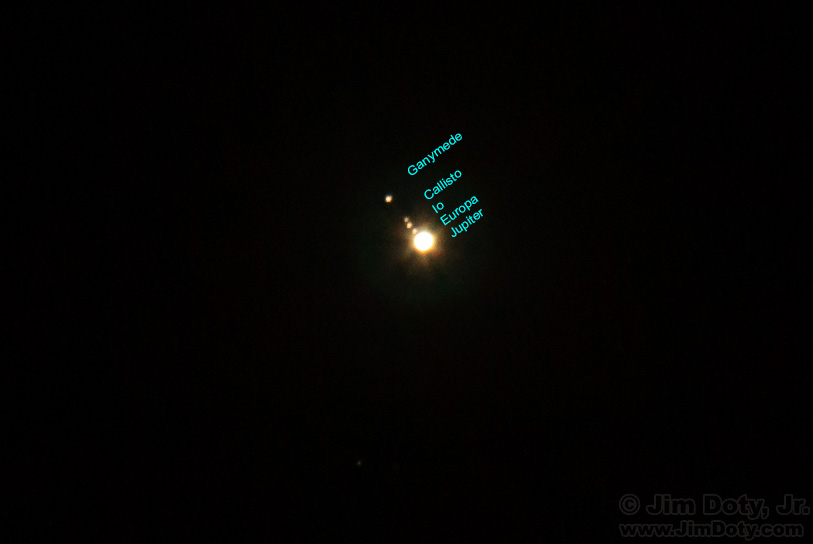
If you are using a normal lens to get Jupiter/Saturn, the evening sky, and the landscape (a lake would be nice) all in one image, start as soon as Jupiter is visible, meter the night sky and bracket generously in one stop increments on either side of the camera meter reading.
How To Links
How To Focus Your Lens at Infinity for Night Photography
How To Get Critical Focus in “Live View” Mode with a Magnified Image
Free Software Link
Information Links
Time and Date: the Jupiter/Saturn Conjunction
Earth and Sky: Jupiter and Saturn’s Great Conjunction
Equipment Link
How To Choose A High Quality Telescope
Books Link
The Best Night, Astronomy, and Astrophotography Books
